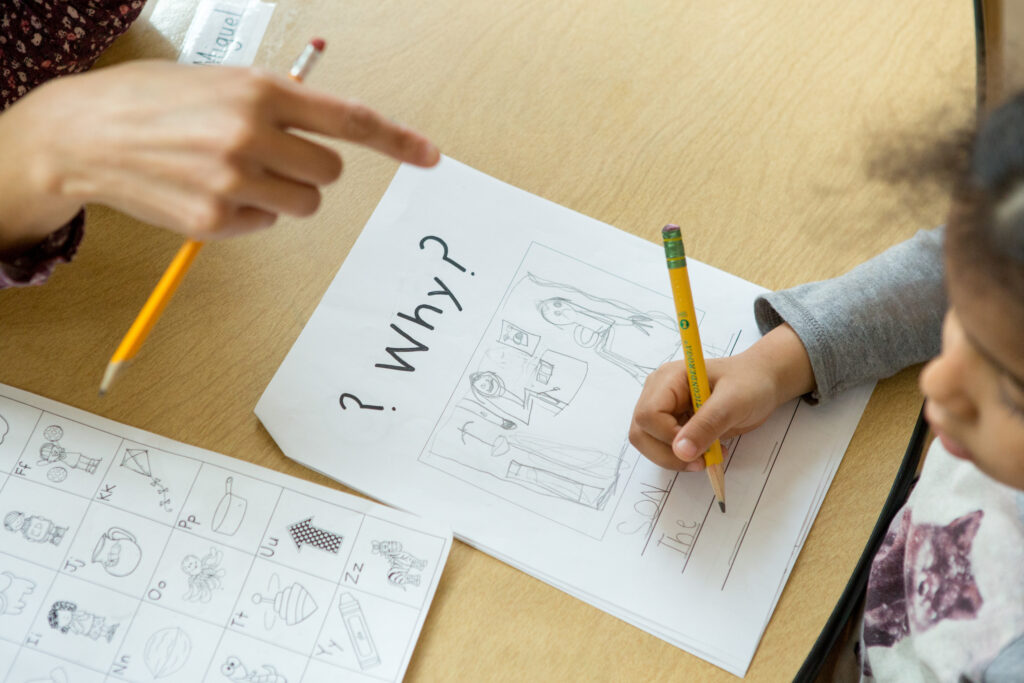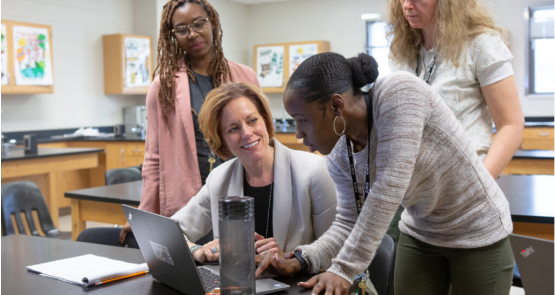Frequently Asked Questions
Critical thinking is a process that starts with reflection: thinking about your own thinking. The ultimate goal of critical thinking is to think reflectively, objectively, and analytically about situations and problems. It requires practice differentiating between relevant and irrelevant information, taking into consideration opposing points of view, and having more tolerance of others.
The Reboot Foundation’s commitment to critical thinking manifest itself in two primary goals: (1) to fund scientific experiments and surveys related to topics in critical thinking, and (2) to develop a dynamic website available for those who want to cultivate capacity for critical thinking through pedagogy; information around what to do and not to do when developing critical thinking; and practical, concrete exercises.
It Is Possible To Develop Critical Thinking At Home. Kids As Young As Seven Can Differentiate Between Opinion, Argument, And Proof, And Those Who Think About Their Thinking Are Shown To Perform Better In School. Parents Can Help Kids Learn To Engage In Richer Forms Of Thoughts And To Grow More Comfortable With Expression And Argumentation Of Different Thoughts And Opinions.
One Of The Most Important Roles Of A Parent In This Domain Is To Provide A Safe Environment To Test And Practice Such Cognitive Skills. Strategies As Simple As Asking “Why” Questions Help To Develop Kids’ Critical Thinking Skills On Their Own As They Work Through Their Argumentation.
See Our Parents’ Guide And Our Insights For Children And Teens Page For Other Tools, Programs, And Resources That Can Be Used At Home.
It is never too late to develop your critical thinking capacities. Adults can and do learn to develop their critical thinking, although starting early and with lots of practice helps to progressively develop and improve critical thinking.
Remember to really dig into a topic, gather lots of facts from reliable sources, ask pointed questions, and question initial assumptions. The Reboot Foundation has developed a SHARP framework as a step-by-step approach to reasoning that helps leverage critical thinking in daily life and decision-making.
See more on our Insights for Adults and Professionals page for concrete ways to improve your critical thinking as an adult.
It’s clear that fake news is with us for the long run. Government regulation and improvements to the design of social media sites can do a lot to protect elections and democratic discourse, but a sustainable solution requires a general population that is more media literate and better able to think critically about information online.
Reboot’s research — along with other studies — suggests that even small and quick interventions can help people become more savvy consumers of misinformation. But media literacy is still not emphasized enough in schools, our analysis found. Along with civics and critical thinking education, a commitment to media literacy can help protect and improve public discourse.
Deepfakes are fake videos that use artificial intelligence to create content that is indiscernible from the real thing. Access to such tools is not yet widespread, but they are becoming more common. Within a few years, just about any member of the public will be able to use this technology to create fake videos of politicians and other public figures saying and doing whatever the video’s authors want.
Deepfake technology has the potential to further disrupt our public discourse and sow seeds of suspicion about everything we see online. Technology companies, governments, and researchers are working on tools to verify videos and prevent the spread of fakes, but it might not be enough. Deepfakes and other forms of advanced misinformation may become a serious threat to public discourse.
At Reboot, we believe that critical thinking skills are the best defense against deepfakes and other forms of misinformation. Skills and habits of mind in evaluating sources, understanding media, corroborating information, and seeking out diverse and trustworthy points of view are indispensable as the public confronts a confusing and ever-changing information environment.
In Today’s Dynamic World, Critical Thinking Provides A Crucial Edge. Schools Demand Critical Thinking Capacities Of Their Students, As Do Employers Of Their Employees. With New Technology And Business Models Transforming One Industry After Another, There Is Enormous Opportunity For Sharper Forms Of Thinking.
What’s More, Weak Reasoning And Bad Logic Can Lead To Massive Losses At Any Stage Of Life. Still, We Tend To Take Less And Less Time To Stop And Hone Our Thoughts. We Prioritize Efficiency Over Reflection, And Impulse Over Forethought. We Comment On Social Media Channels Without Thinking.
Part Of The Challenge Is The Quality And Quantity Of Information. After All, We Are Bombarded With Information, Misinformation, Facts, And Fake News. This Information Overload Is Impossible To Wade Through Without The Critical Thinking Competencies To Identify Bias, Question Assumptions, And Draw Reasoned Conclusions.
See More On Our Insights For Adults And Professionals Page For Ways Critical Thinking Applies To Your Daily Life.
Critical thinking approaches in education takes many forms: whereas some schools offer coursework specifically for developing critical thinking capacities, others develop mindsets for critical thinking that is manifest in school culture. Others still take a subject-specific approach to embedding critical thinking into the classroom based on what critical thinking looks like in a particular domain.
One thing is for sure, critical thinking cannot be limited to a buzzword. If we are going to emphasize critical thinking, we must also place a value on it, assess it, and hold students accountable. Student can, for example, be required to show their work, defend an opposing viewpoint, or break down topics into all its component parts.
Teachers can leverage the Socratic method to push students’ thinking through questioning, challenging students not only to learn, but also to understand why they are learning a certain topic
See more on our Insights for Children and Teens page for how other teachers and schools are conceptualizing and operationalizing critical thinking education.
Reboot does not accept unsolicited grant proposals, but we do love to hear from others dedicated to critical thinking. Send us a message, visit our homepage to subscribe to our newsletter, and don’t forget to follow us on Facebook and Twitter.
The Reboot Foundation is entirely supported by the generosity of Bruno and Helen Lee Bouygues. Helen Lee Bouygues serves as the President of the Foundation. All of the resources developed by the foundation are provided without charge.
The Reboot Foundation funds scientific experiments and surveys around critical thinking, including research that has contributed, for example, to our State of Critical Thinking report and Education Technology analysis. We also fund academic research into impactful and innovative topics in critical thinking.
Critical thinking is a process that starts with reflection: thinking about your own thinking. The ultimate goal of critical thinking is to think reflectively, objectively, and analytically about situations and problems. It requires practice differentiating between relevant and irrelevant information, taking into consideration opposing points of view, and having more tolerance of others.
The Reboot Foundation’s commitment to critical thinking manifest itself in two primary goals: (1) to fund scientific experiments and surveys related to topics in critical thinking, and (2) to develop a dynamic website available for those who want to cultivate capacity for critical thinking through pedagogy; information around what to do and not to do when developing critical thinking; and practical, concrete exercises.
In today’s dynamic world, critical thinking provides a crucial edge. schools demand critical thinking capabilities from their students, as do employers and their employees. With new technology and business models transforming one industry after another, there is enormous opportunity for sharper forms of thinking.
Weak reasoning and bad logic can lead to massive losses at any stage of life. Still, we tend to take less and less time to stop and hone our thoughts. We prioritize efficiency over reflection, and impulse over forethought. We comment on social media channels without thinking.
Part of the challenge is the quality and quantity of information. After all, we are bombarded with information, misinformation, facts, and fake news. This information overload is impossible to navigate without critical thinking competencies to identify biases, question assumptions, and draw reasoned conclusions.
It is never too late to develop your critical thinking capacities. Adults can and do learn to develop their critical thinking, although starting early and with lots of practice helps to progressively develop and improve critical thinking.
Remember to really dig into a topic, gather lots of facts from reliable sources, ask pointed questions, and question initial assumptions. The Reboot Foundation has developed a SHARP framework as a step-by-step approach to reasoning that helps leverage critical thinking in daily life and decision-making.
It’s clear that fake news is with us for the long run. Government regulation and improvements to the design of social media sites can do a lot to protect elections and democratic discourse, but a sustainable solution requires a general population that is more media literate and better able to think critically about information online.
Reboot’s research — along with other studies — suggests that even small and quick interventions can help people become more savvy consumers of misinformation. But media literacy is still not emphasized enough in schools, our analysis found. Along with civics and critical thinking education, a commitment to media literacy can help protect and improve public discourse.
Critical thinking approaches in education takes many forms: whereas some schools offer coursework specifically for developing critical thinking capacities, others develop mindsets for critical thinking that is manifest in school culture. Others still take a subject-specific approach to embedding critical thinking into the classroom based on what critical thinking looks like in a particular domain.
One thing is for sure, critical thinking cannot be limited to a buzzword. If we are going to emphasize critical thinking, we must also place a value on it, assess it, and hold students accountable. Student can, for example, be required to show their work, defend an opposing viewpoint, or break down topics into all its component parts.
Teachers can leverage the Socratic method to push students’ thinking through questioning, challenging students not only to learn, but also to understand why they are learning a certain topic
See our Teacher’s Guide To Critical Thinking for more.
It is possible to develop critical thinking at home. Kids as young as seven can differentiate between opinion, argument, and proof, and those who think about their thinking are shown to perform better in school. Parents can help kids learn to engage in richer forms of thoughts and to grow more comfortable with expression and argumentation of different thoughts and opinions.
One of the most important roles of a parent in this domain is to provide a safe environment to test and practice such cognitive skills. Strategies as simple as asking “why” questions help to develop kids’ critical thinking skills on their own as they work through their argumentation.
See our parents’ guide for tools, programs, and resources that can be used at home.
Reboot does not accept unsolicited grant proposals, but we do love to hear from others dedicated to critical thinking. Send us a message, visit our homepage to subscribe to our newsletter, and don’t forget to follow us on Facebook and Twitter.



